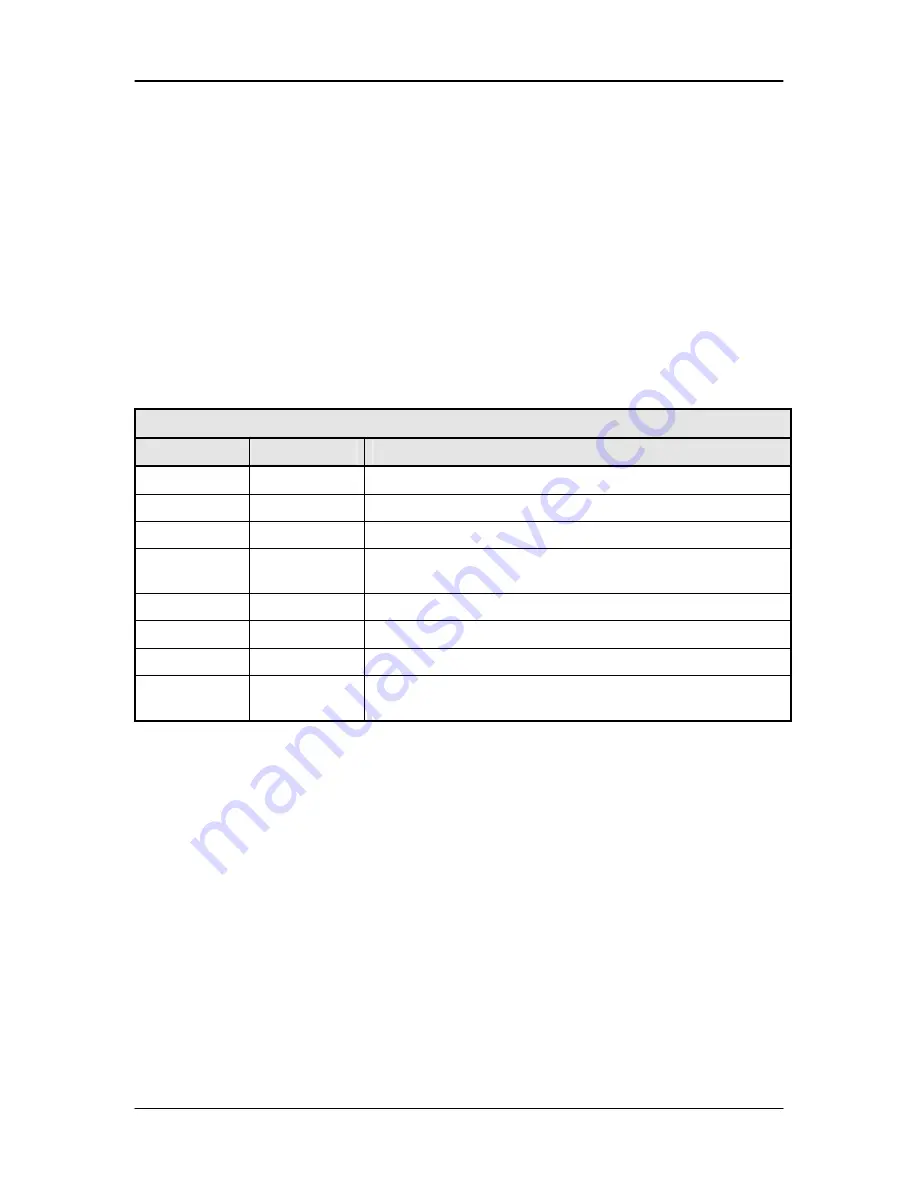
User Interfaces
DM240XR High-Speed Digital Modulator
4-2
TM120 – Rev. 1.1
4.1.1 Front Panel LCD Display
The front panel display is a 2 line by 16-character LCD display. The display is lighted and the
brightness can be set to increase when the front panel is currently in use. The LCD display
automatically dims after a period of inactivity. The display has two distinct areas showing current
information. The upper area shows the current parameter being monitored, such as ‘Frequency’
or ‘Data Rate’. The lower line shows the current value of that parameter. The LCD display is a
single entry window into the large matrix of parameters that can be monitored and set from the
front panel.
4.1.2 Front Panel LED Indicators
Eight LEDs on the DM240 front panel (Refer to Table 4-2) indicate the status of the DM240’s
operation. The LED colors maintain a consistent meaning. Green signifies that the indication is
appropriate for normal operation, Yellow means that there is a condition not proper for normal
operation, and Red indicates a fault condition that will result in lost communications.
Table 4-2.
LED
Color
Function
Transmit On
Green
Indicates the DM240 Transmitter is turned on.
Major Alarm
Red
Indicates that the transmit direction has failed, losing traffic.
Minor Alarm
Yellow
Indicates a transmit warning condition exists.
Test Mode
Yellow
Indicates the modulator is involved in a current test mode
activity.
Power
Green
Indicates the DM240 unit is currently powered up.
Fault
Red
Indicates a common fault exists such as power out of spec.
Event
Yellow
Indicates that events have been logged into the event buffer.
Remote
Green
Indicates that the unit is set to respond to the remote control
or terminal input.
4.1.3 Front Panel Keypad
The front panel keypad consists of two areas: a 10-key numeric entry with 2 additional keys for
the ‘Enter’ and ‘Clear’ function. The second area is a set of ‘Arrow’ or ‘Cursor’ keys (
↑
), (
↓
), (
→
),
(
←
), used to navigate the parameter currently being monitored or controlled. Table 4-3 describes
the key functions available at the front panel.
4.1.4 Parameter Setup
The four arrow keys (
↑
), (
↓
), (
→
), (
←
), to the right of the LCD display are used to navigate the
menu tree and select the parameter to be set. After arriving at a parameter that needs to be
modified, depress <ENTER>. The first space of the modifiable parameter highlights (blinks) and
is ready for a new parameter to be entered. After entering the new parameter using the keypad
(Refer to Figure 4-3), depress <ENTER> to lock in the new parameter. If a change needs to be
made prior to pressing <ENTER>, depress <CLEAR> and the display defaults back to the original
parameter. Depress <ENTER> again and re-enter the new parameters followed by <ENTER>.
Following a valid input, the DM240XR will place the new setting into the nonvolatile SRAM
making it available immediately and available the next time the unit is powered-up.
Summary of Contents for DM240XR
Page 2: ......
Page 10: ...Table of Contents DM240XR High Speed Digital Modulator x TM120 Rev 1 1 ...
Page 12: ...Introduction DM240XR High Speed Digital Modulator 1 2 TM120 Rev 1 1 ...
Page 16: ...Installation DM240XR High Speed Digital Modulator 2 4 TM120 Rev 1 1 ...
Page 19: ...DM240XR High Speed Digital Modulator Theory of Operation TM120 Rev 1 1 3 3 ...
Page 55: ...User Interfaces DM240XR High Speed Digital Modulator 4 36 TM120 Rev 1 1 ...
Page 67: ...Rear Panel Interfaces DM240XR DVB High Speed Digital Modulator 5 12 TM120 Rev 1 1 ...
Page 69: ...Maintenance and Troubleshooting DM240XR High Speed Digital Modulator 6 2 TM120 Rev 1 1 ...
Page 79: ...Technical Specifications DM240XR High Speed Digital Modulator 7 10 TM120 Rev 1 1 ...
Page 103: ...Appendix A DM240XR High Speed Digital Modulator A 24 TM120 Rev 1 1 ...
Page 124: ...DM240XR High Speed Digital Modulator Appendix B TM120 Rev 1 1 B 21 ...
















































